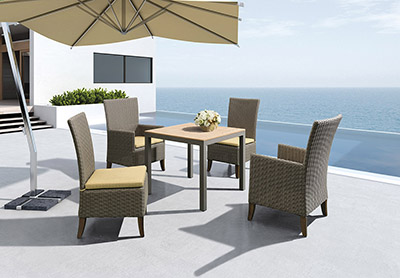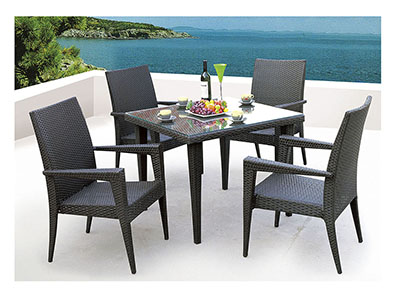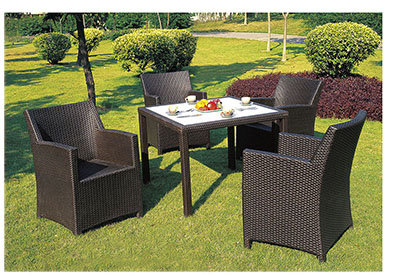In the current international situation of saving energy and preventing environmental pollution, pollution-free and pollution-free “green packaging†is quietly rising in the world. The packaging industry in China is now growing at an average annual growth rate of over 18%. In 2004, the total output value of this industry was nearly 400 billion yuan. It bears more than 4 trillion yuan in the packaging of goods every year. The output value of the packaging industry and the total society The proportion of output value has risen from 0.4% in the early 1980s to about 2% today. The packaging industry has risen from 40th to 15th among 40 industries in the national economy; packaging enterprises have grown to more than 20,000.
In the rapid development of China's packaging industry, both practitioners and consumers share the same consensus, allowing various packaging products to "green" and packaging is an important part of green environmental protection. According to statistics, as of December 2001, China's green packaging enterprises have approached 1,000, industry investment has exceeded 8 billion yuan, and annual total output value has been no less than 3 billion yuan.
What is green packaging?
As we all know, the rapid development of the packaging industry has also become one of the largest polluting and resource-wasting industries. According to statistics, the amount of packaging waste in U.S. urban waste accounts for more than 35%. Japan is as high as 45%. According to incomplete statistics, China is at least 15% or more. . The so-called green packaging has not yet seen a complete definition. Generally considered to have four aspects. Namely: the material is the most provincial, the least waste, and save resources and energy; easy to recycle and recycling; waste combustion to produce new energy without secondary pollution; packaging materials and self-decomposable at least, do not pollute the environment.
The packaging and the environment complement each other. On the one hand, the packaging needs to consume energy and resources in its production process. The generation of industrial waste and packaging waste will pollute the environment. It also needs to see that the packaging protects the goods and reduces the damage of the goods in circulation. It is conducive to reducing environmental pollution. At present, in solving the relationship between packaging and the environment, it is not only to consider how to deal with packaging waste, but to consider that all packaging products required for people's activities are to consume natural resources and energy, generate waste and affect the global environment. for exchange. Therefore, the goal of packaging is to preserve the maximum natural resources, to form the minimum amount of waste and minimal environmental pollution.
The most promising green packaging materials
The four pillars of modern packaging - paper, plastic, metal, glass. Among these four kinds of packaging materials, paper products have the fastest growth, paper and plastic are the cheapest, raw materials are widely available, and are not as fragile as glass, and they are not as heavy as iron and are easy to carry. Therefore, paper and plastic packaging are widely used in daily life. The International Health Organization and domestic environmental protection experts believe that domestic and foreign markets will gradually ban the use of food bags and require that they be packaged in environmentally friendly paper bags. In the future, shopping should use non-toxic and harmless “full paper eco-friendly bagsâ€. Paper products are prone to decay and can either recycle recycled paper or make plant fertilizers, reduce air pollution, and purify the environment. At present, China's food, medicine, glassware, instrumentation, electromechanical and light industrial products are mostly plastic products. To seek new alternative materials, scientists have developed waste paper recycled plastic packaging materials with good air permeability. Softness, toughness and strength, the product is non-toxic, non-polluting, rich in raw materials, low cost, can be widely used in the inner packaging of various products. Therefore, paper packaging will become one of the most promising green packaging materials compared with other three major plastic, metal, and glass packagings.
Cartons, paper bags, paper drums, pulp molded products have become an important part of the modern packaging industry. Paper packaging containers are widely used for transport packaging and system packaging due to their characteristics such as light weight, easy processing, low cost, and easy recycling of waste materials. .
At present, the output of paper and paperboard is increasing year by year. Packaging paper and paperboard account for more than 50% of the total output of paper and paperboard. The per capita consumption of paper has become an important indicator of the economic development level and social civilization of a country.
The basic parts of the convenience food paper packaging that we commonly find in instant noodle bowls and beverage packaging bottles are already environmentally friendly packaging. Taking the green tableware as an example, the total demand for fast food in China is about 6 billion pieces, and the total demand for instant noodle bowls exceeds 5 billion pieces; in addition, the annual demand for clean dishes and food trays used in supermarkets is not low. With a total of 100 million pieces, the combined total annual demand is about 12 billion pieces, and the potential sales volume should not be less than 3 billion yuan. At present, the actual output of green tableware in China is only about 3 billion pieces, which is only 1/4 of the total actual demand.
"No Container Packaging" - The Paradigm of Green Packaging
Green packaging is in line with the world's green consumption trend, which is conducive to breaking through the international green barriers. At the same time, it will play a positive role in reducing the rate of breakage of goods in circulation and improving the quality of packaging products.
At present, some developed countries are vigorously advocating "moderate" packaging and efforts to reduce packaging. For example, as early as 1990, Conneg. State of the United States put forward a bill requiring the reduction of "moderate packaging" in the packaging of goods; the German government in the relevant regulations requires industrial enterprises to reduce the use of packaging materials and use environmentally-friendly materials; Japan also vigorously Promote reduced packaging to save raw and auxiliary materials and reduce packaging waste.
In the specific operation, foreign plastic flexible packaging is in the ascendant trend. Many large-scale home appliances are packaged with the upper and lower parts of the package with a hard package to support the fixed, the external use of high-strength transparent plastic film; many small household appliances such as recorders, DVD The packaging of such products uses vacuum blister packaging. This "non-container packaging" is one of the models of green packaging. It aims at products that only need to protect their edges and corners, and do not need to be integrally packaged, and use paper profiles as Its edge protection, corner protection, top protection, bottom protection and other protective packaging materials, so that its environmental protection, cost, commercial promotion, etc. can be comprehensively embodied, opened up a new way to reduce packaging.
The packaging design of the previous period is crucial to environmental protection. Packaging design does not seem to be in contact with environmental protection, in fact, hidden in mystery. To develop green packaging, we must start from the source. When designing packaging, we must first consider whether the packaging can save resources, whether it can be recycled and recycled, and optimize the final recycling process. Now some foreign companies have done a very successful job in the packaging design of small household appliances.
In the early stage of packaging design, these companies paid great attention to the humanization and art of product packaging. They usually used a combination of psychological, marketing, cultural, aesthetic and other factors to carefully design their product packaging, and took good environmental protection from the source. first round. For example, making outer packagings such as flower baskets, ornaments and other artistic shapes not only enriches the connotation of products, but also can be used as home decoration materials, fully complying with the packaging product life cycle analysis (LCA), which greatly delays the recycling cycle. Good embodies the environmental protection purpose.
(to be continued)
Square aluminum Patio Dining Set are welcome four place settings and with hand rattan weaving rattan, to make your life different and special. You can choose different size and color to decorate your dining and garden.
The quality is last year in, year outside for at least two years.
Durable powder-coated aluminum to resist corrosion year after year
Accommodates up to nine place settings very comfortably
Pair with handwoven wicker Beaumont Dining Collection, which includes armchairs, corner, right-facing and left-facing loveseat.
· RUST-FREE ALUMINUM FRAME
· ALL-WEATHER HANDWOVEN WICKER
· HIGH UV RESISTANT WICKER
· EASY TO CLEANAND CARE
· 100% WATERPROOF FABRIC
· 2 YEAR WARRANTY




About us:
1.our factory is more than 20000 square meter big.
2. Our showroom is about 800 square meters.
3. we have professional sale team and more than 200 workers.
4. The capacity of our factory is 60 containers/month.
5. we attended CIFF furniture fair and canton fair.
Welcome your inquiry for further discussion.
Square Patio Dining Set,Wicker Square Dining Set,Outdoor Square Dining Set,Garden Square Dining Set
Golden Eagle Outdoor Furniture Co., LTD. , https://www.gepatio.com